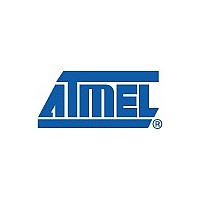SAM9M11 Atmel Corporation, SAM9M11 Datasheet - Page 79

SAM9M11
Manufacturer Part Number
SAM9M11
Description
Manufacturer
Atmel Corporation
Specifications of SAM9M11
Flash (kbytes)
0 Kbytes
Pin Count
324
Max. Operating Frequency
400 MHz
Cpu
ARM926
Hardware Qtouch Acquisition
No
Max I/o Pins
160
Ext Interrupts
160
Usb Transceiver
3
Usb Speed
Hi-Speed
Usb Interface
Host, Device
Spi
2
Twi (i2c)
2
Uart
5
Lin
4
Ssc
2
Ethernet
1
Sd / Emmc
2
Graphic Lcd
Yes
Video Decoder
Yes
Camera Interface
Yes
Adc Channels
8
Adc Resolution (bits)
10
Adc Speed (ksps)
440
Resistive Touch Screen
Yes
Dac Resolution (bits)
No
Temp. Sensor
No
Crypto Engine
AES/DES
Sram (kbytes)
64
Self Program Memory
NO
External Bus Interface
2
Dram Memory
DDR2/LPDDR, SDRAM/LPSDR
Nand Interface
Yes
Picopower
No
Temp. Range (deg C)
-40 to 85
I/o Supply Class
1.8/3.3
Operating Voltage (vcc)
0.9 to 1.1
Fpu
No
Mpu / Mmu
No / Yes
Timers
6
Output Compare Channels
6
Input Capture Channels
6
Pwm Channels
4
32khz Rtc
Yes
Calibrated Rc Oscillator
No
- Current page: 79 of 284
- Download datasheet (2Mb)
3.3.5
ARM DDI 0029G
Coprocessor register transfer cycles
When designing a memory controller, ensure that the design also works when an I-cycle
is followed by an N-cycle to a different address. This sequence can occur during
exceptions, or during writes to the PC. It is essential that the memory controller does
not commit to the memory cycle during an I-cycle.
During a coprocessor register transfer cycle, the ARM7TDMI processor uses the data
buses to transfer data to or from a coprocessor. A memory cycle is not required and the
memory controller does not initiate a transaction. The memory system must not drive
onto the data bus during a coprocessor register transfer cycle.
The coprocessor interface is described in Chapter 4 Coprocessor Interface. The
coprocessor register transfer cycle is shown in Figure 3-6 on page 3-10.
Note
Copyright © 1994-2001. All rights reserved.
nMREQ
A[31:0]
D[31:0]
MCLK
nRAS
nCAS
SEQ
I-cycle
Figure 3-5 Merged IS cycle
S-cycle
Memory Interface
3-9
Related parts for SAM9M11
Image
Part Number
Description
Manufacturer
Datasheet
Request
R

Part Number:
Description:
INTERVAL AND WIPE/WASH WIPER CONTROL IC WITH DELAY
Manufacturer:
ATMEL Corporation
Datasheet:

Part Number:
Description:
Low-Voltage Voice-Switched IC for Hands-Free Operation
Manufacturer:
ATMEL Corporation
Datasheet:

Part Number:
Description:
MONOLITHIC INTEGRATED FEATUREPHONE CIRCUIT
Manufacturer:
ATMEL Corporation
Datasheet:

Part Number:
Description:
AM-FM Receiver IC U4255BM-M
Manufacturer:
ATMEL Corporation
Datasheet:

Part Number:
Description:
Monolithic Integrated Feature Phone Circuit
Manufacturer:
ATMEL Corporation
Datasheet:

Part Number:
Description:
Multistandard Video-IF and Quasi Parallel Sound Processing
Manufacturer:
ATMEL Corporation
Datasheet:

Part Number:
Description:
High-performance EE PLD
Manufacturer:
ATMEL Corporation
Datasheet:

Part Number:
Description:
8-bit Flash Microcontroller
Manufacturer:
ATMEL Corporation
Datasheet:

Part Number:
Description:
2-Wire Serial EEPROM
Manufacturer:
ATMEL Corporation
Datasheet:

Part Number:
Description:
U6046BREAR WINDOW HEATING TIMER / LONG-TERM TIMER
Manufacturer:
ATMEL Corporation
Datasheet:










